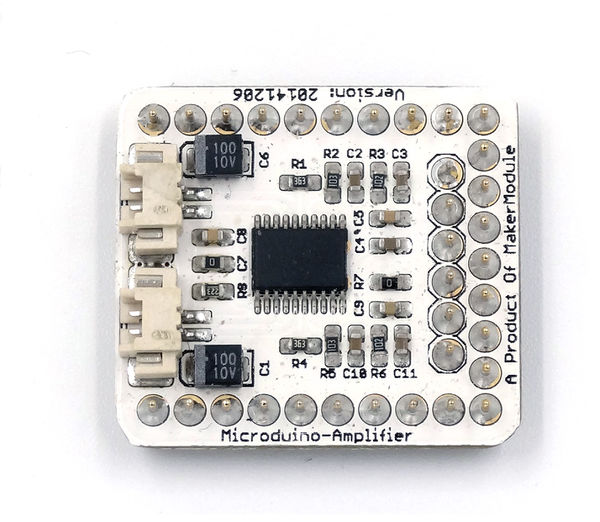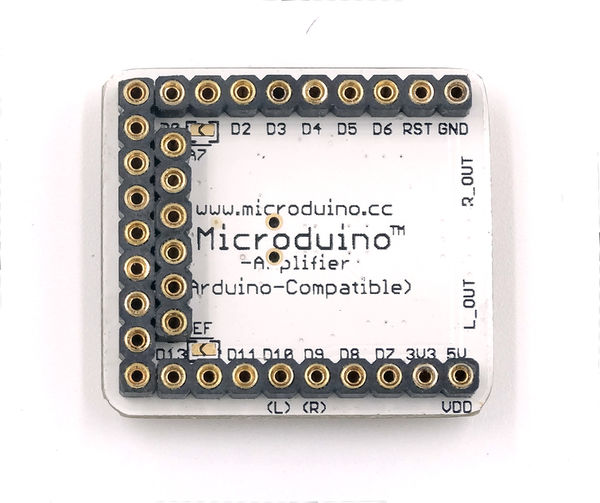“Microduino-Amplifier”的版本间的差异
(→Development) |
(→Feature) |
||
| 第13行: | 第13行: | ||
*Small, cheap, stackable and open | *Small, cheap, stackable and open | ||
*Open hardware circuit design and Arduino compatible programming development environment; | *Open hardware circuit design and Arduino compatible programming development environment; | ||
| − | * | + | *Uniform Microduino interface standard and rich peripheral modules, capable of having a fast and flexible connection and extension with other modules and sensors in accord with Microduino interface standard; |
*Easy to be integrated to pegboards with a 2.45-pitch female header connector interface. | *Easy to be integrated to pegboards with a 2.45-pitch female header connector interface. | ||
| 第19行: | 第19行: | ||
|- | |- | ||
| | | | ||
| + | |||
==Specifications== | ==Specifications== | ||
*Offer 2.2W output for 4Ω load; | *Offer 2.2W output for 4Ω load; | ||
2014年8月22日 (五) 02:51的最新版本
| Language | English |
|---|
|
文件:Microduino-LM4863-rect1.jpg Microduino-LM4863 Microduino-Amplifier is the double-channel audio power amplifier module. |
Feature
|
Specifications
文件:LM4863-Pinout-2.jpg Microduino-LM4863-Pinout 文件:LM4863-Pinout-1.jpg Microduino-LM4863-Pinout DocumentEagle PCB 文件:Microduino-LM4863.zip Main Component
Development
Arduino library and supported package
How to use the library
Low-power shutdown of external control
ApplicationProgram Download
The Audio experiment using Core and SD
The process of making an audio file
Pictures
|

